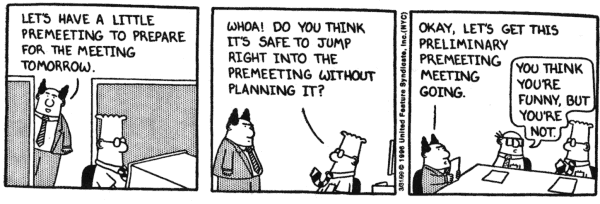The following post is PART IV of a five part series on how to become a retail marketing superhero. We’ve leveraged the collective experiences from our most successful clients, some of the top retailers in the world, to help you the retail marketer achieve ultimate success in your career and for the business. Download the complete ebook here!
Consumers are increasingly sensitive to consistency across channels, forcing retailers to take another look at how they align promotions and merchandising operationally. These efforts have been complicated by the growing demand for message localization and the tendency of many consumers to do research in one channel and make purchases in another.
In an effort to address these challenges, forward-looking retailers are actively integrating marketing with operations, often overseeing multiple teams and channels. However, the proliferation of new digital channels, and their integration into the promotion and merchandising mix, further complicates the life of the marketer – creating a need for strong coordination across channels and departments.
Consider your own situation: You may be engaged in a tremendous set of efforts to coordinate activities and update team members, including tons of administrative work to keep documents and spreadsheets timely. If this sounds familiar, you may be mired in tactical activities that add little value and, in fact, pull you away from activities that are strategic in nature.How can you, as the marketing leader, address this challenge head on? Start with meetings!
Meetings are universally recognized as a frequent drag on productivity. There’s a tendency to use them to ensure balls don’t get dropped and that everyone is aligned as a team. However, these “informational” meetings pull you and your team away from other high priority activities. Executive leadership does not care how many meetings you take, only that sales increase.
Question the necessity of meetings
How many meetings do you either organize or simply attend because the communication approaches are not efficiently getting your organization aligned and mobilized toward its objectives? These are meetings designed to merely convey information as opposed to meetings that might deal with substantive matters of strategy, innovation, or creative approach.
Which meetings are absolutely necessary? Get some resolution on this matter, recognizing it’s possible to eliminate many meetings that simply revolve around information sharing.
2Capture the contents of a marketing plan in a marketing repository. The easier it is to update that repository and the more accessible its contents to your team members, the more valuable it is — and the more it has the potential to replace actual meetings.
Maximizing the reach and productivity of meetings
Ensure the right people are participating. Due to schedule conflicts and geographic dispersion, it’s often difficult to meet in person. And yet, companies go to heroic lengths to meet in person anyway.
How might digital or virtual approaches to communication help you to surmount this barrier? When a meeting is necessary but a physical meeting is impossible, how could you meet virtually?
There are many tools to support you on this issue — from WebEx to GotoMeeting to join.me to Google Hangouts. Choose one. You can do everything from web conferencing to video conferencing, engaging participants in an array of time zones and geographic locations. Meetings are more productive when they include the right people. By extending the reach of meetings, you make it possible to get the right people in them.
Capturing the contents of meetings
Sometimes, key stakeholders can’t attend meetings even when they are important. That doesn’t mean they can’t be apprised of what happened in the meeting.
Get a digital asset management system to document the slides and materials that were presented. You can have the right people review materials so they can stay on top of the issues that were addressed, decisions that were made, and progress that occurred. Everyone doesn’t have to meet — in person or even in real-time — to ensure everyone is on the same page.
Three More Ways to Drive Efficiencies
Beyond the focus on meetings, there are other ways to enhance efficiency, coordination and consistency. Do these now:
Asset catalogs:
Marketers and merchandisers need a comprehensive view into all marketing communications that support a specific event or campaign. In order to maintain consistency, you need to be able to see each marcom element side-by-side, across all channels and audiences. Whereas retail marketers would have attached postings on a physical wall to accomplish this goal in the past, they now can look at digital approaches to this challenge. A Digital Media Wall, for instance, offers a way to manage elements in the development process but also allows teams to stay up-to-date with their campaign performance.
Process automation:
Make impressive gains in operational efficiency and consistency by minimizing the number of manual tasks needed to support an omni-channel marketing campaign. Consider how you might realize these benefits through circular automation and direct mail automation, for instance.
Reduction of spreadsheet use:
Spreadsheets that are emailed across teams often fall prey to version control, timing issues, lack of ownership, and the inability of the team to have access to consistent information. As a growing number of retail marketers have discovered, you no longer need to rely on Excel spreadsheets to track tasks, due dates, and project performance. With a centralized and digital marketing calendar software, you’ll have a collaborative tool for ensuring efficiency and consistency across all aspects of retail marketing.
You’re challenged to drive operational efficiencies, coordination and consistency — to streamline processes and workflows. These are some actions you need to take to meet that goal. By getting a better grip on when to have meetings, how to make them more inclusive, and how to better leverage the contents that come out of them, you set the stage for increased productivity and performance in your organization.
By introducing asset catalogs, enhancing process automation, and reducing your reliance on spreadsheets, you will get more things done. And you will get them done more quickly and more effectively and to the greater satisfaction of all your stakeholders and team members, all while reducing errors.
Learn how CrossCap makes retail marketers look like superheroes: Visit our site or contact us.
About the Author:
Darrell Fry
Retail guru, Darrell Fry, brings 36 years of valuable retail experience to CrossCap, garnered primarily through his position as VP of Advertising Production at both OfficeMax and Sears. Darrell was inspired to join CrossCap in 2007 based on his experience installing and utilizing our system as one of our clients. Sold by the efficiency and originality of CrossCap’s product, Darrell holds that unlike many EMM Systems, CrossCap’s system “thinks like a retailer”. As VP of Customer Experience, Darrell is essential towards helping clients utilize our software capabilities most effectively and developing client work processes that are based on best industry practices.



